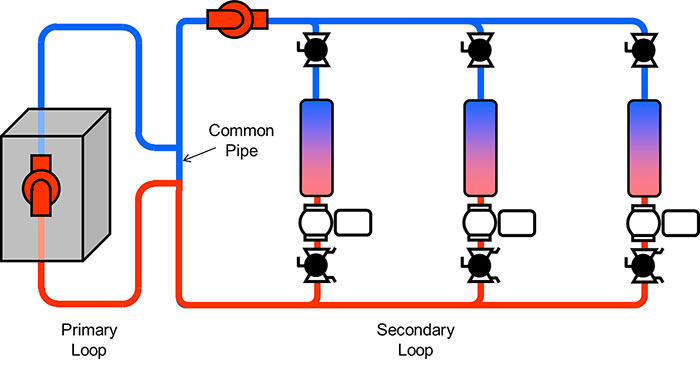Building service used in hydronic system designs for a variety of applications.
01/30/2019
Q: We are updating our building cooling system. It was mentioned that the update would include primary-secondary pumps, what does this mean? A: Primary-secondary (P-S) pumping is incorporated into hydronic system designs for a variety of applications. The most frequent application of P-S pumping is used in chilled water systems where there is a need to have fairly constant flow through the chiller evaporator and variable flow through the distribution system. P-S pumping also allows a designer to break up very large, complicated systems into smaller, more manageable subsystems. P-S pumping can also provide different supply water temperatures to each secondary loop without mixing valves.
 Image 1. Piping schematic of two pumping loops sharing a common pipe (Images courtesy of Hydraulic Institute)
Image 1. Piping schematic of two pumping loops sharing a common pipe (Images courtesy of Hydraulic Institute)
